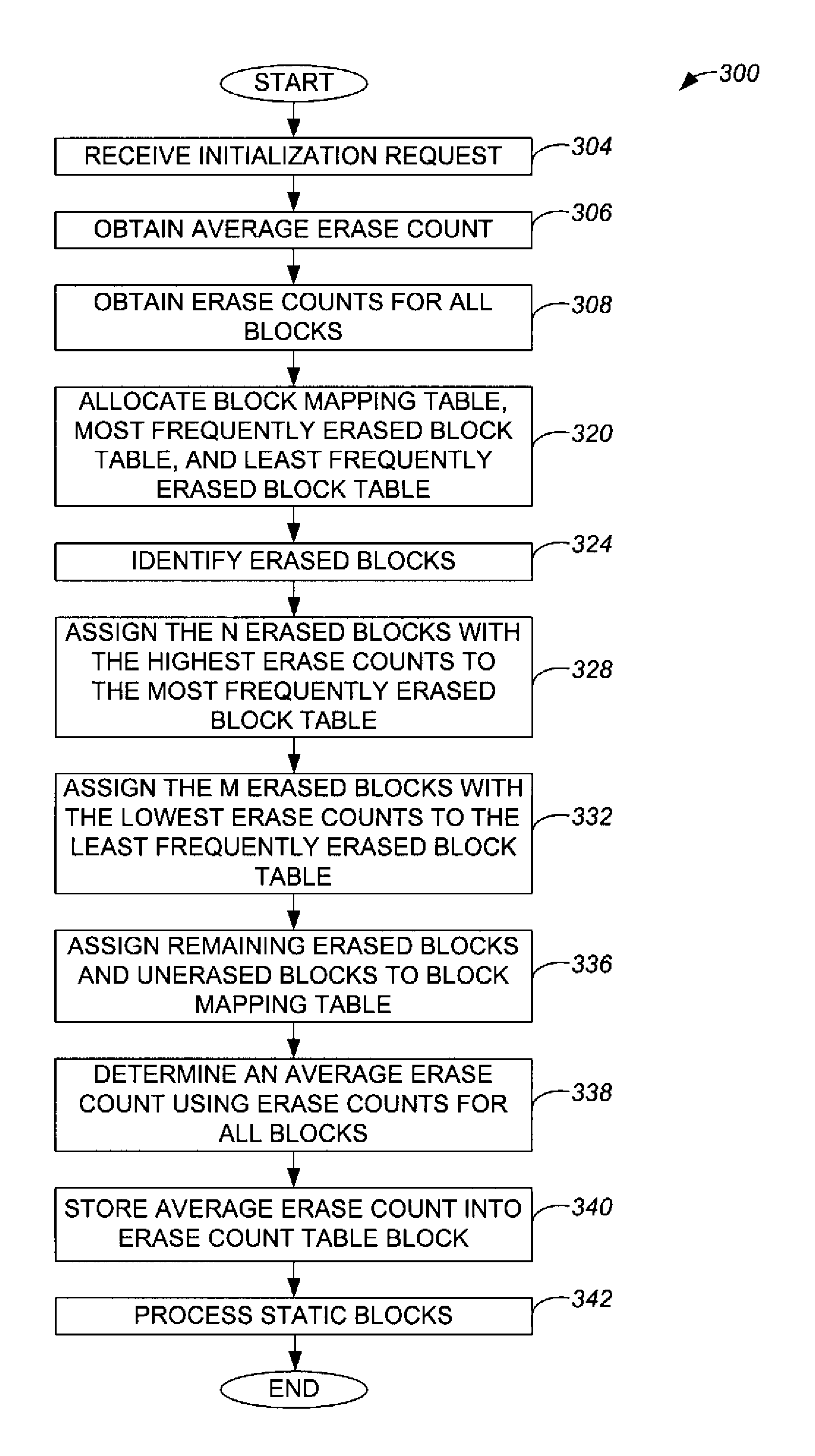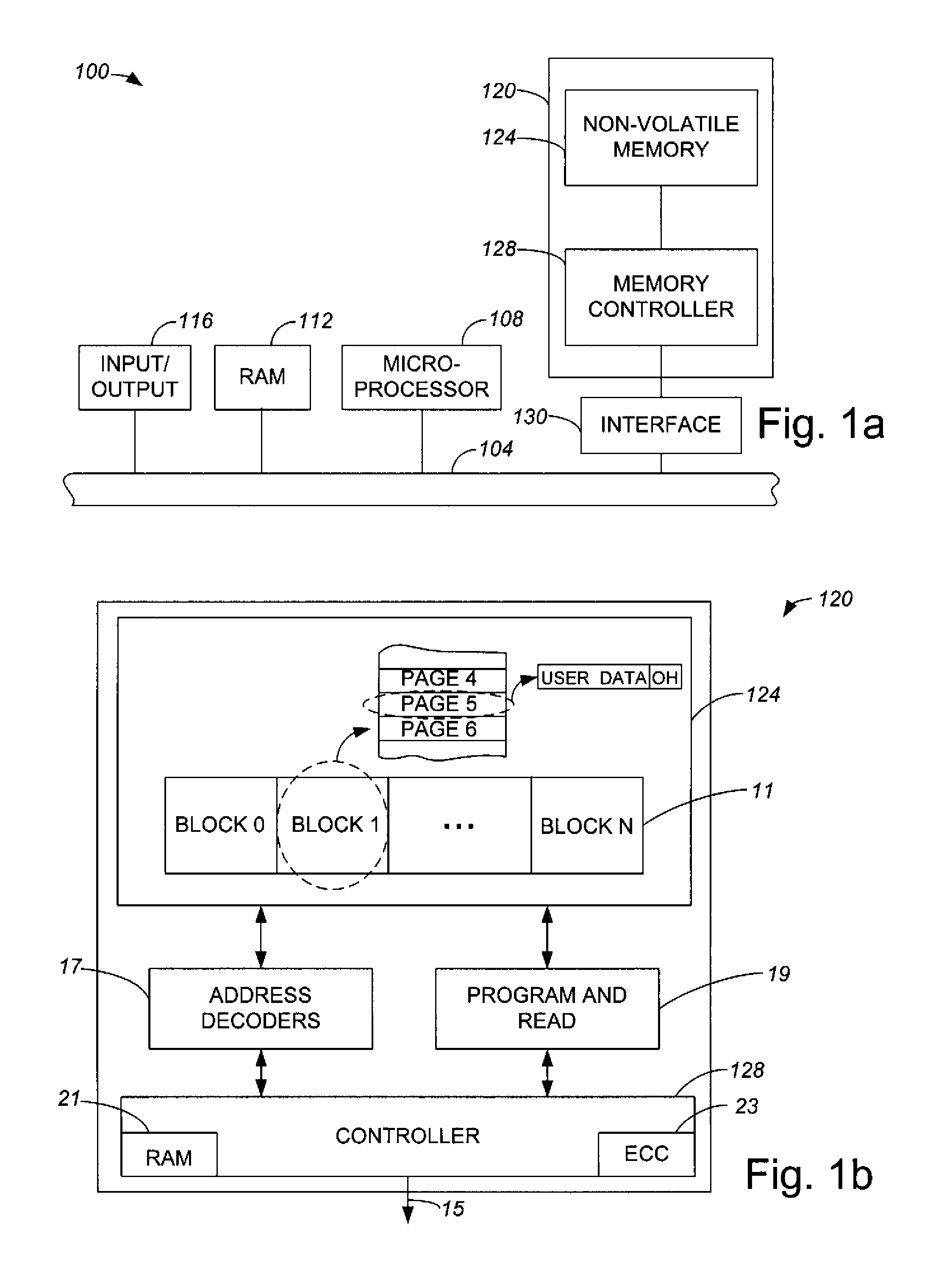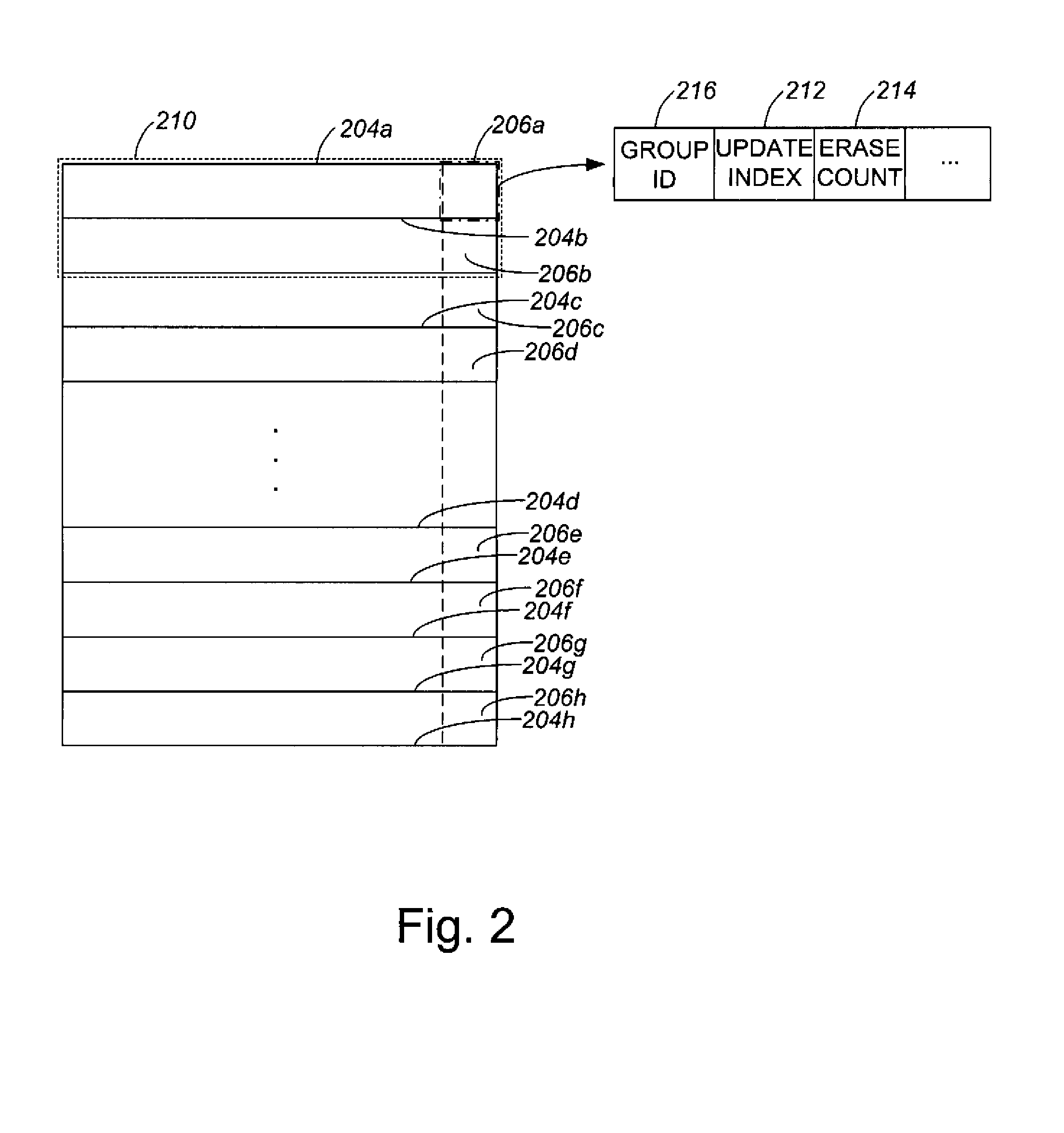Tracking the least frequently erased blocks in non-volatile memory systems
a non-volatile memory system and block technology, applied in the field of mass digital data storage systems, can solve the problems of loss of use, significant performance degradation, adverse effects on users of flash memory systems, etc., and achieve the effect of facilitating the allocation of less worn blocks
- Summary
- Abstract
- Description
- Claims
- Application Information
AI Technical Summary
Benefits of technology
Problems solved by technology
Method used
Image
Examples
Embodiment Construction
[0031]Non-volatile memory storage blocks within flash memory storage systems may be repetitively programmed and erased, although each block may generally only be erased a finite number of times before the block wears out. When a block wears out, a relatively significant degradation of performance associated with the portion of the overall storage volume of the flash memory storage system that includes the worn out block occurs, and data stored in that portion may be lost, or it may become impossible to store data in that portion.
[0032]In order to increase the likelihood that blocks wear out more evenly within a flash memory storage system, blocks may be more evenly utilized. By keeping track of how many times each block has been erased, as for example through the utilization of an erase count, memory within a system may be more evenly used. An erase count management technique may store an erase count which keeps track of how many times a particular block has been erased in a redunda...
PUM
 Login to View More
Login to View More Abstract
Description
Claims
Application Information
 Login to View More
Login to View More - R&D
- Intellectual Property
- Life Sciences
- Materials
- Tech Scout
- Unparalleled Data Quality
- Higher Quality Content
- 60% Fewer Hallucinations
Browse by: Latest US Patents, China's latest patents, Technical Efficacy Thesaurus, Application Domain, Technology Topic, Popular Technical Reports.
© 2025 PatSnap. All rights reserved.Legal|Privacy policy|Modern Slavery Act Transparency Statement|Sitemap|About US| Contact US: help@patsnap.com



